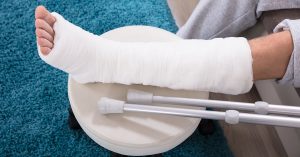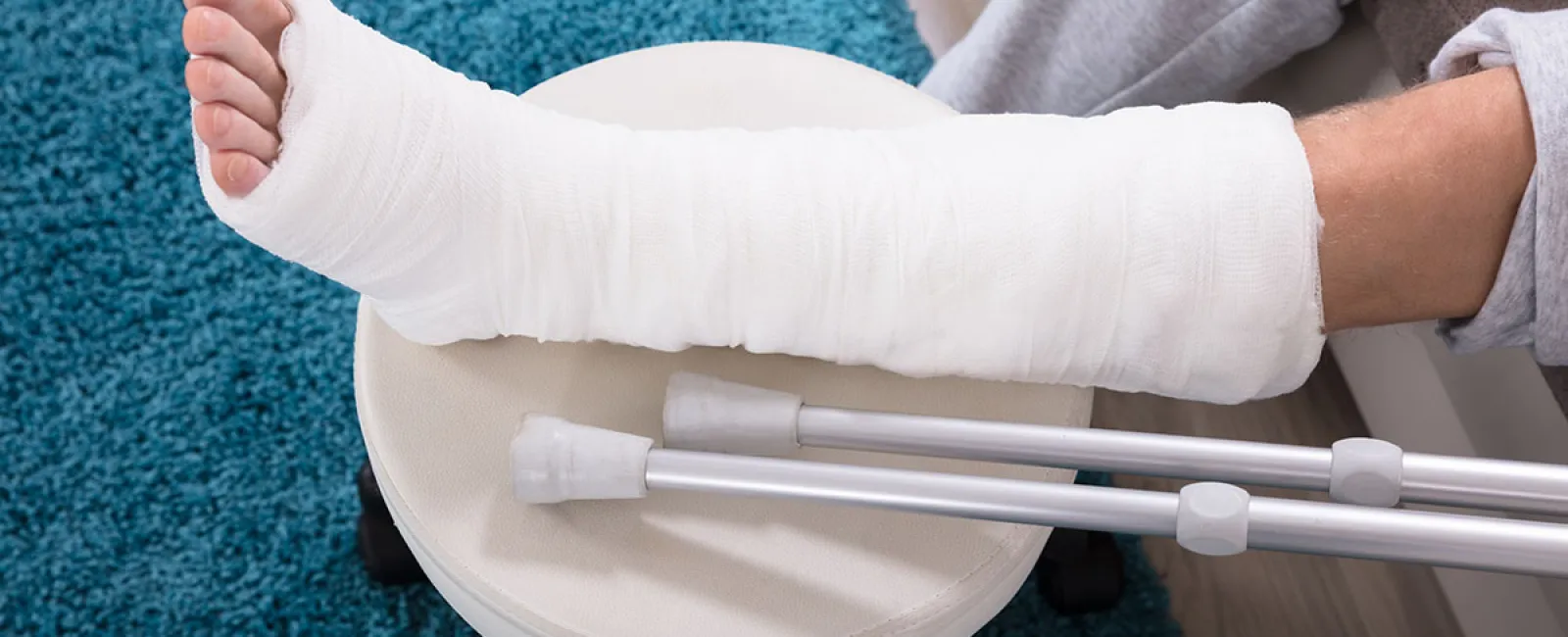
Bone Fracture Basics
There are several types of bone fractures, and each type can have slight variations. Many of the types of fractures we'll talk about later may also be described by one of the following terms:
- Open Fracture: A fracture in which the bone breaks through the skin and can be seen outside the leg. Or there is a deep wound that exposes the bone through the skin. This is also called a compound fracture.
- Closed Fracture: A fracture that does not break the skin. This is also called a simple fracture.
- Partial Fracture: An incomplete break of the bone
- Complete Fracture: A complete break of the bone causing it to be separated into two or more pieces
- Stable Fracture: The broken ends of the bone line up and have not moved out of place.
- Displaced Fracture: There is a gap between the broken ends of the bone. Repairing a displaced fracture may require surgery.
Types of Bone Fractures
Different types of bone fractures can be open, closed, stable, displaced, partial, or complete.
1. Transverse Fracture
Transverse fractures are breaks that are in a straight line across the bone. This type of fracture may be caused by traumatic events like falls or automobile accidents.
2. Spiral Fracture
As the name suggests, this is a kind of fracture that spirals around the bone. Spiral fractures occur in long bones in the body, usually in the femur, tibia, or fibula in the legs. However, they can occur in the long bones of the arms. Spiral fractures are caused by twisting injuries sustained during sports, during a physical attack, or in an accident.
3. Greenstick Fracture
This is a partial fracture that occurs mostly in children. The bone bends and breaks but does not separate into two separate pieces. Children are most likely to experience this type of fracture because their bones are softer and more flexible.
4. Stress Fracture
Stress fractures are also called hairline fractures. This type of fracture looks like a crack and can be difficult to diagnose with a regular X-rays. Stress fractures are often caused by repetitive motions such as running.
5. Compression Fracture
When bones are crushed it is called a compression fracture. The broken bone will be wider and flatter in appearance than it was before the injury. Compression fractures occur most often in the spine and can cause your vertebrae to collapse. A type of bone loss called osteoporosis is the most common cause of compression fractures.
6. Oblique Fracture
An oblique fracture is when the break is diagonal across the bone. This kind of fracture occurs most often in long bones. Oblique fractures may be the result of a sharp blow that comes from an angle due to a fall or other trauma.
7. Impacted Fracture
An impacted fracture occurs when the broken ends of the bone are driven together. The pieces are jammed together by the force of the injury that caused the fracture.
8. Segmental Fracture
The same bone is fractured in two places, leaving a "floating" segment of bone between the two breaks. These fractures usually occur in long bones such as those in the legs. This type of bone fracture may take longer to heal or cause complications.
9. Comminuted Fracture
A comminuted fracture is one in which the bone is broken into 3 or more pieces. There are also bone fragments present at the fracture site. These types of bone fractures occur when there is a high-impact trauma, such as an automobile accident.
10. Avulsion Fracture
An avulsion fracture occurs when a fragment is pulled off the bone by a tendon or ligament. These types of bone fractures are more common in children than adults. Sometimes a child's ligaments can pull hard enough to cause a growth plate to fracture.
The team at South Shore Orthopedics has expertise in a wide range of orthopedic subspecialties, including fracture care. If you have concerns about fractures, osteoporosis, or the health of your bones, call our office at (781) 337-5555 to make an appointment.
During the COVID-19 pandemic, SSO's priority is keeping our patients and staff healthy and safe. Our office continues to operate on a daily basis Monday - Friday from 8 am - 4 pm and we have implemented CDC recommended procedures regarding temperature checks, social distancing, and face coverings. We have been focusing on seeing urgent or emergent cases in-office but have telehealth appointments for nonemergent cases. Click here to read our latest coronavirus update in its entirety.
